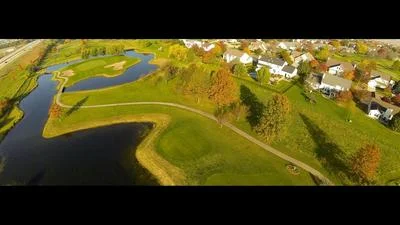Illinois' farmland has seen stability in values throughout 2019. | Pixabay
Illinois' farmland has seen stability in values throughout 2019. | Pixabay
Values on farmland in Illinois have stayed stable throughout the majority of 2019 regardless of some extreme changes in the market, a survey released from the Illinois Society of Professional Farm Managers and Rural Appraisers found.
After the annual conference, the organization released the results of the survey in a webinar, reported AgriNews.
David Klein, First Mid Ag Service vice president and Illinois Farmland Values Survey and Conference chair, said farmland is a safe investment.
"Our survey data shows the farmland price trends in the state continues to exhibit a stable pattern with little deviation from a year ago,” Klein told AgriNews. “In our year-end survey we capture the sentiment of what appraisers and farmland real estate brokers believe they are seeing."
The state average was $10,500 per acre of excellent quality farmland in 2019 while good quality farmland averaged $8,600 per acre.
The productivity index for excellent rated farmland is 133 and above and good rates is 117 to 132.
Central Illinois showed the most consistent and stable farmland market, the survey said.
Compared to 2018, sales were smaller but had higher quality in 2019. The survey also found that the majority of farmland sales (58%) were due to settling estates. Another 44% of farmland sales were due to estate sales.
In the state's 10 regions, the averages for excellent quality farmland sales were $9,766 in region one, $10,800 per acre in region three, $10,514 in region four, and $9,500 to $11,500 per acre in region five. Region six had an average of $10,835 for excellent quality, region seven's average was $11,338 per acre and region eight's average was $12,780 in 2019, according to AgriNews.
Region one consists of Will, Kankakee, Kendall, Kane, DeKalb, Grundy, McHenry, LaSalle and Boone counties. The survey found that all farmland in region one was stable in 2019, which is a result from the demand from farmers and investors.
Region two is made up of Bureau, Carroll, Stephenson, Jo Daviess, Whiteside, Lee, Ogle, Winnebago, Henry and Mercer counties. The region's farmland market was steady when compared to 2018, the survey indicated.
Stark, Peoria, Warren, Henderson, McDonough, Knox and Fulton counties make up region three. In region three, the survey said that farmland buyers noticed land blemishes and tend to demand excellence.
Region four consists of Livingston, Woodford, McLean, Tazewell, Mason, Marshall and Putnam counties. Farmland sales were steady throughout 2019, the survey showed, but farmland prices varied based on the areas.
Champaign, Douglas, Coles, Edgar, Vermilion, Iroquois and Ford counties are in region five, which had excellent and good farmland productivity decrease in 2019. But total farmland sales increased 8% from 2018, the survey said.
Region six is made up of Macon, Logan, DeWitt, Piatt, Moultrie, Shelby and Christian counties. Farmland sales increased from 2018, the survey showed. The farmland market remained steady for the first three quarters of 2019 and values increased even more in the fourth quarter.
Region seven has Greene, Calhoun, Sangamon, Macoupin, Morgan, Scott, Montgomery, Cass and Jersey counties in it. Values of farmlands were steady in 2019, but sales were down overall.
Madison, Bond, Sr. Clair, Clinton, Washington, Monroe and Randolph counties make up region eight, which saw a variety of prices across lands in 2019 compared to the previous years. Before 2008, farmland in this region sold for three times today's farmland value. But in 2019, values in this region rose above average, the survey showed.
Region nine, made up of Clark, Cumberland, Lawrence, Wabash, Edwards, Fayette, Effingham, Richland, Marion, Jasper, Crawford, Wayne and Clay counties, has had a steady farmland market for years in a row, the survey reported. While most farmlands have remained steady, there has been some decline in lands without the best quality.
Illinois' last region consists of Gallatin, Hamilton, Massac, Pulaski, Saline, White, Alexander, Franklin, Jackson, Jefferson, WIlliamson, Union, Johnson, Hardin, Perry and Pope counties. Region 10 had an overall productivity sales increase by 10% and decreased by 3% from 2018, the survey said.






 Alerts Sign-up
Alerts Sign-up